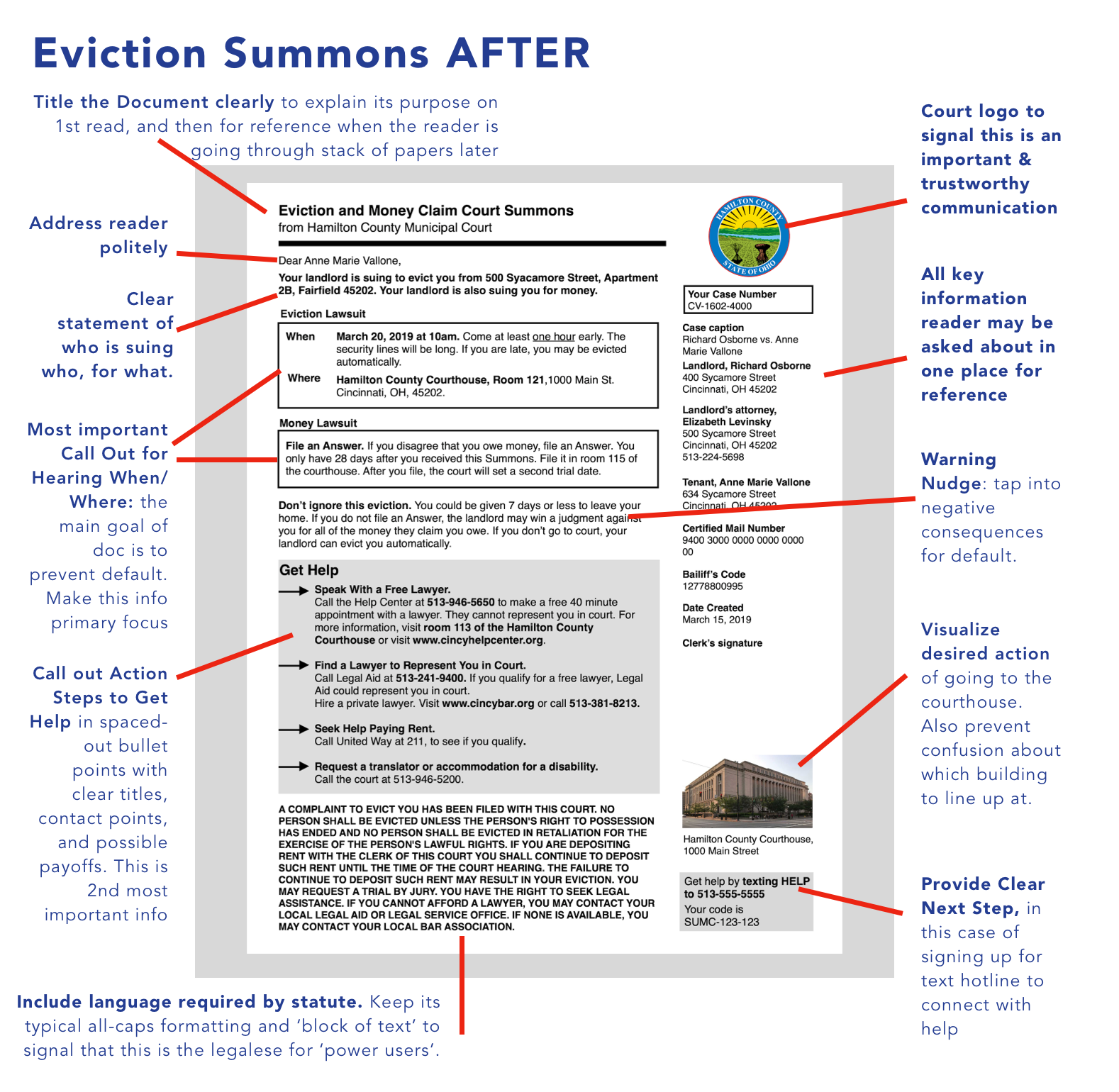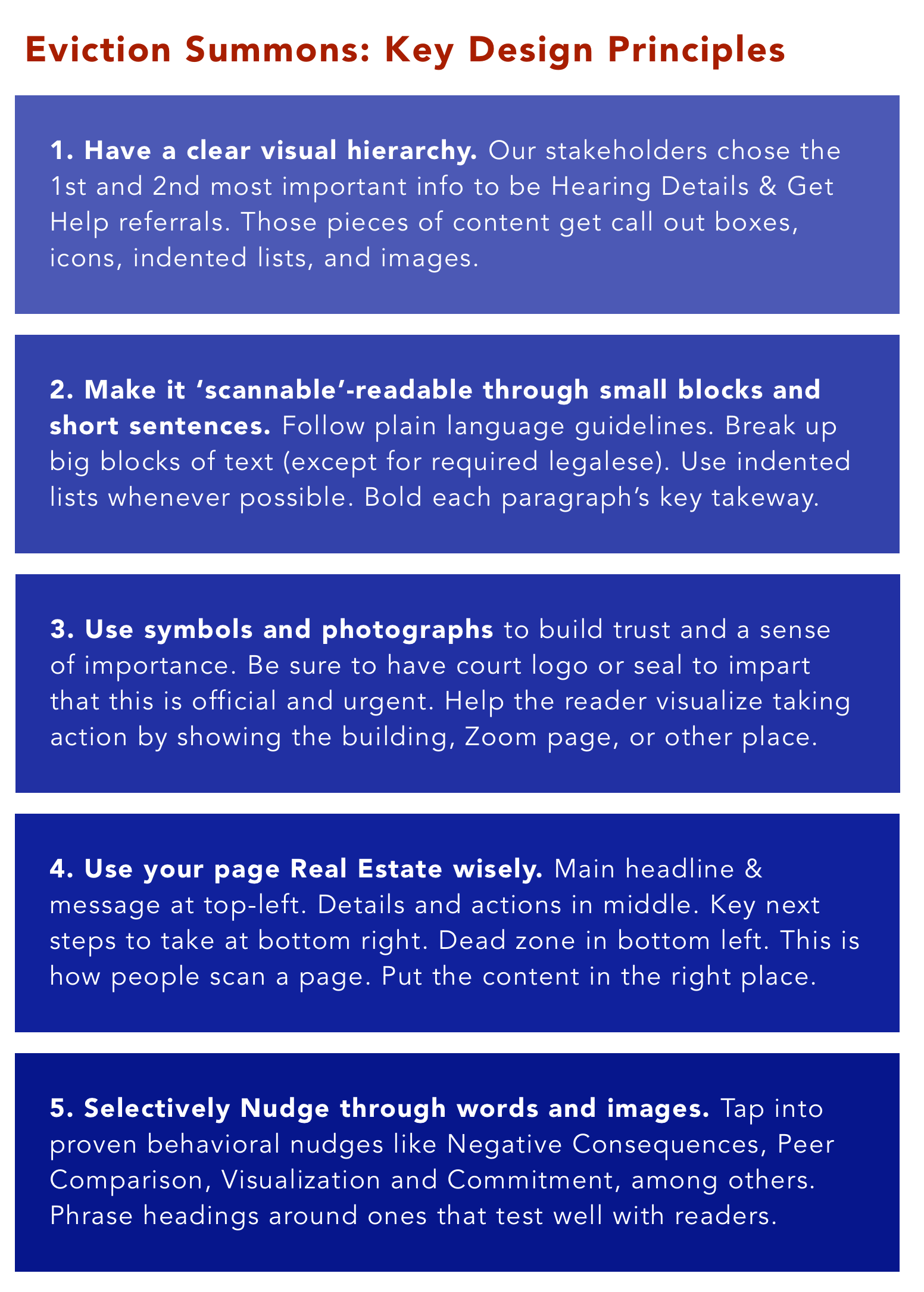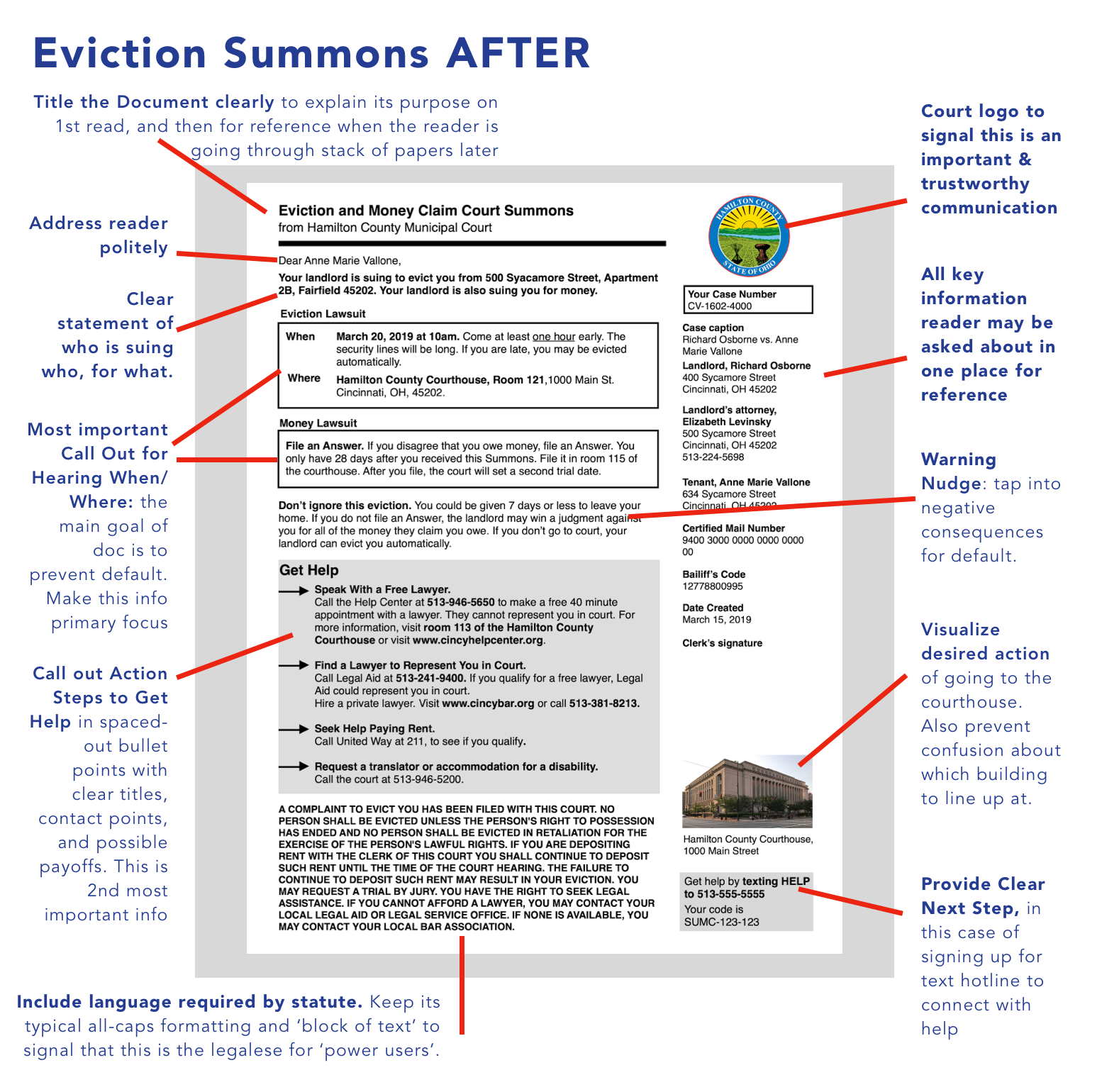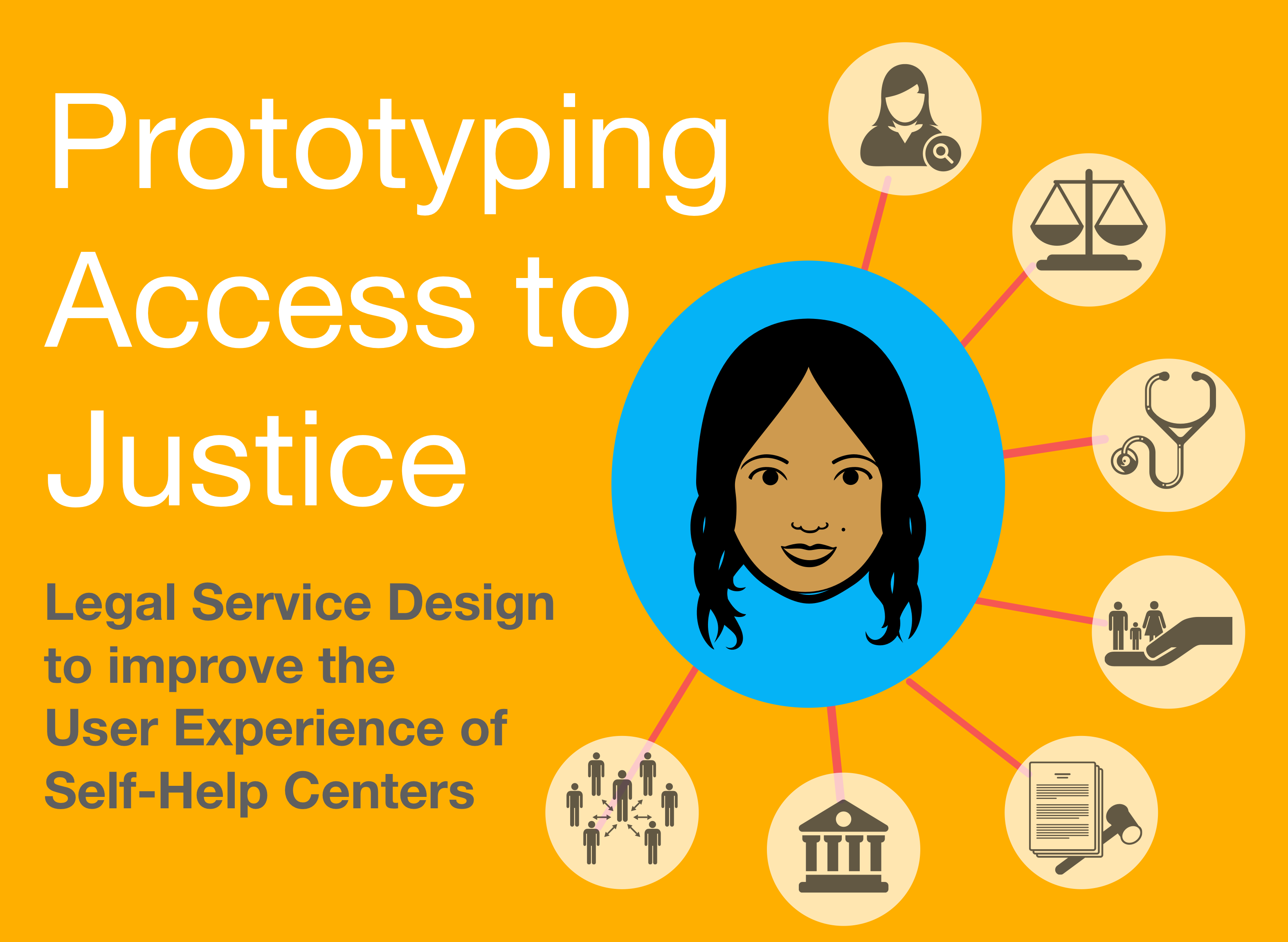If you are sued by your landlord to evict you from your home, how would you like to find out?
The papers you get from the court — the Summons to the eviction trial, and the Complaint from your landlord about why they’re suing from you — most often are dense, legalistic documents.
These pieces of paper can set the tone for the eviction legal process. And they can communicate: is the court for you? If you show up to the eviction trial, are you going to be able to protect yourself, and get your voice heard? Or is this going to be so intimidating & confusing that it’s not even worth it to show up?
And even more fundamentally: can you even understand these documents? Is it clear that:
- you have been sued
- that you have rights and groups who can help you
- that if you don’t come to your court hearing that you could be evicted by a sheriff?
Our Legal Design Lab has collaborated with the Hamilton County Municipal Court in Ohio to reimagine how people
We took the current court eviction summons and did a series of multi-stakeholder workshops to reimagine its look, feel, and content to make it more user-centered. We created and refined a new summons, and have been piloting it in the court to see if we can increase tenants’ participation in the court process and use of legal services.
Here is how the traditional court summons looks like, and what we found in our workshops that needed to be fixed.

We then had brainstorming and prototyping workshops in Cincinnati to create a new eviction summons design. We had plain language and visual design principles front of mind. And we also had tenants, landlords, advocates, and court officials contribute their preferences (as well as legal and statutory requirements).
Here is our finalized new summons design.

We will have study results about whether the new summons resulted in more people attending their hearing & using legal aid services. Preliminary results indicate that the new summons did increase the participation rate/decrease the default rate (though COVID has been a confounder!).
We do have some design principles for user-centered court documents, notifications, and summons that other groups can use.

Each new design should be driven by local stakeholders & their needs. But these principles can help your court or legal design team create court documents that people will be more likely to read — and take action with.
This piece was also published on our Medium publication Legal Design & Innovation.



1 Comment
I’m in awe of this. Truly fantastic.